
Gatwick Express is an express rail passenger service between London Victoria, Gatwick Airport, Haywards Heath and Brighton in South East England. It is the brand name used by the Govia Thameslink Railway train operating company on the Gatwick Express route of the Thameslink, Southern and Great Northern franchise.
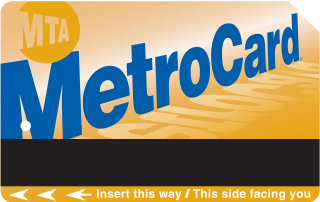
The MetroCard is a magnetic stripe card used for fare payment on transportation in the New York City area. It is a payment method for the New York City Subway, New York City Transit buses and MTA buses. The MetroCard is also accepted by several partner agencies: Nassau Inter-County Express (NICE), the PATH train system, the Roosevelt Island Tramway, AirTrain JFK, and Westchester County's Bee-Line Bus System.
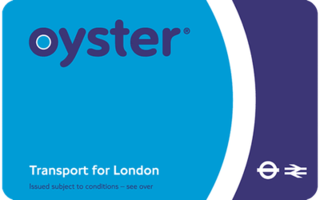
The Oyster card is a payment method for public transport in London, England, United Kingdom. A standard Oyster card is a blue credit-card-sized stored-value contactless smart card. It is promoted by Transport for London (TfL) and can be used on as part of London's integrated transport network on travel modes including London Buses, London Underground, the Docklands Light Railway (DLR), London Overground, Tramlink, some river boat services, and most National Rail services within the London fare zones. Since its introduction in June 2003, more than 86 million cards have been used.

A ticket machine, also known as a ticket vending machine (TVM), is a vending machine that produces paper or electronic tickets, or recharges a stored-value card or smart card or the user's mobile wallet, typically on a smartphone. For instance, ticket machines dispense train tickets at railway stations, transit tickets at metro stations and tram tickets at some tram stops and in some trams. Token machines may dispense the ticket in the form of a token which has the same function as a paper or electronic ticket. The typical transaction consists of a user using the display interface to select the type and quantity of tickets and then choosing a payment method of either cash, credit/debit card or smartcard. The ticket(s) are then printed on paper and dispensed to the user, or loaded onto the user's smartcard or smartphone.

Gatwick Airport railway station is on the Brighton Main Line in West Sussex, England. It serves Gatwick Airport, 26 miles 47 chains (42.8 km) down the line from London Bridge via Redhill. The platforms are about 70 metres (230 ft) to the east of the airport's South Terminal, with the ticket office above the platforms and station entrances and exits directly connected to the terminal. The station is also connected to the airport's North Terminal by the Airport Shuttle people-mover. Gatwick Airport was the busiest station in South East England region from 2017 to 2018. There have been two stations at Gatwick, sited about 0.85 miles (1.37 km) from each other. It is the busiest station in both West Sussex and South East England, and the sixth busiest station in the UK outside of London.

The Brighton Main Line is a railway line in southern England linking London to Brighton. It starts at two termini in the capital, London Victoria and London Bridge, and the branches from each meet at East Croydon, from where the route continues southwards via Gatwick Airport to the coast. The line serves the suburbs of South London, as well as the towns of Redhill, Horley, Crawley, Haywards Heath and Burgess Hill.
SmartRider is the contactless electronic ticketing system of the Public Transport Authority of Western Australia. The system uses RFID smartcard technology to process public transport fares across public bus, train, and ferry services.

Redhill railway station serves the town of Redhill, Surrey, England. The station is a major interchange point on the Brighton Main Line, 22 miles 40 chains (36.2 km) measured from London Charing Cross. It is managed by Southern, and is also served by Thameslink and Great Western Railway.

Salfords railway station serves the village of Salfords in Surrey, England. The station is sometimes shown as Salfords (Surrey) in timetables to differentiate it from the two stations in Salford, Greater Manchester. It is on the Brighton Main Line, 23 miles 37 chains (37.8 km) down the line from London Bridge via Redhill and is managed by Southern. Train services are provided by Thameslink and Southern.

London has an extensive and developed transport network which includes both public and private services. Journeys made on its integrated transport network account for 37% of London's journeys while private services accounted for 36% of journeys, walking 24% and cycling 2%, according to numbers from 2017. London's public transport network serves as the central hub for the United Kingdom in rail, air and road transport.

The Network Railcard is a discount card introduced in 1986 by British Rail, upon the creation of their Network SouthEast sector in parts of Southern England.

Ascom B8050, usually known by the name QuickFare, is an early example of a passenger-operated railway ticket issuing system, consisting of a series of broadly identical machines installed at British railway stations from 1989 onwards. The machines allow passengers to buy the most popular types of ticket themselves, without having to go to a booking office, and are therefore useful at unstaffed, partly staffed or busy stations. All QuickFare machines have been replaced by more modern technology.
The Scheidt & Bachmann Ticket XPress system is a passenger-operated self-service railway ticket issuing system developed and manufactured by the German systems development and production group Scheidt & Bachmann GmbH, based in the city of Mönchengladbach. Since the first trial installations in 2003, seven train operating companies (TOCs) in Great Britain have adopted the system as their main passenger-operated ticket vending method, while four others have installed machines at certain stations on their networks. More than 1,500 machines are in place across the country, and more than 850 stations have one or more. Machines can accept cash and/or payment cards and can sell most National Rail tickets.

Avantix Mobile ("AVB") is a portable railway ticket issuing system used across the British railway network from 2001 to 2017.
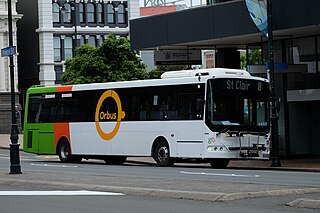
The public transport system of Otago centres around the cities of Dunedin and Queenstown, under the brand name Orbus. Public transport in the region is provided using buses and ferries. Despite sharing a name, the systems in Dunedin and Queenstown are isolated from one another.
Ascom Holding AG is a Swiss telecommunications company focusing on wireless on-site communications. The company has subsidiaries in 18 countries and a workforce of some 1350 employees worldwide.
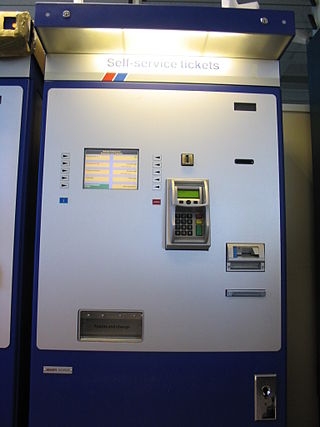
Avantix B8070, more commonly known as Avantix MultiTicket was a passenger-operated railway ticket issuing system, installed at British railway stations from 1999 onwards. The machines were available as upgrades to the Ascom B8050 Quickfare or as new builds.

Govia Thameslink Railway (GTR) is a British train operating company that operates the TSGN rail franchise. Within the franchise, GTR runs trains under the sub-brands: Thameslink, Great Northern, Southern, and Gatwick Express. GTR is a subsidiary of Govia, which is itself a joint venture between the British Go-Ahead Group (65%) and French company Keolis (35%).
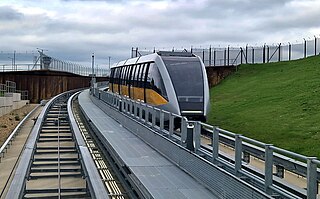
The Luton DART is an airport rail link in Luton, Bedfordshire, England, which connects Luton Airport Parkway station and Luton Airport using a Cable Liner automated people mover system. DART is an acronym for Direct Air–Rail Transit. The line, which opened in March 2023, replaces the shuttle bus service, with the aim of reducing road congestion and reducing journey times from London St Pancras to the airport terminal to 32 minutes.

The Kyiv Boryspil Express is an airport rail link in Ukraine between Boryspil International Airport and Kyiv, opened in November 2018. It is operated by Ukrzaliznytsia, Ukraine's state-owned rail operator.

















